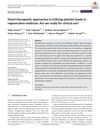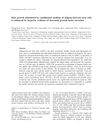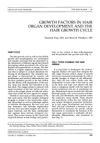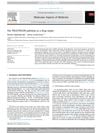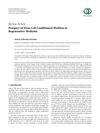Signaling by the Platelet-Derived Growth Factor Receptor Family
January 2009
TLDR PDGF signaling is crucial for cell development, wound healing, and fluid regulation in the body.
The document discussed the roles of the Platelet-Derived Growth Factor (PDGF) family, which consists of disulfide-bonded dimeric proteins with five combinations: PDGF-AA, PDGF-AB, PDGF-BB, PDGF-CC, and PDGF-DD. The PDGF receptors, α and β, had distinct functions. The PDGF β-receptor was involved in pericyte recruitment, smooth muscle cell development, and mesangial cell development, while the PDGF α-receptors were crucial for alveolar smooth muscle cell formation, hair follicle development, villus formation in the gut, and oligodendrocyte development. In adults, PDGF signaling contributed to wound healing by stimulating fibroblasts, smooth muscle cells, and inflammatory cells. PDGF β-receptors also regulated interstitial fluid pressure, affecting fluid transport from vessels to tissues. PDGFs exerted their effects by binding to type III receptor tyrosine kinases, with PDGF-A and PDGF-C binding to PDGF α-receptors, PDGF-B binding to both α and β receptors, and PDGF-D acting as a PDGF β-receptor agonist.

